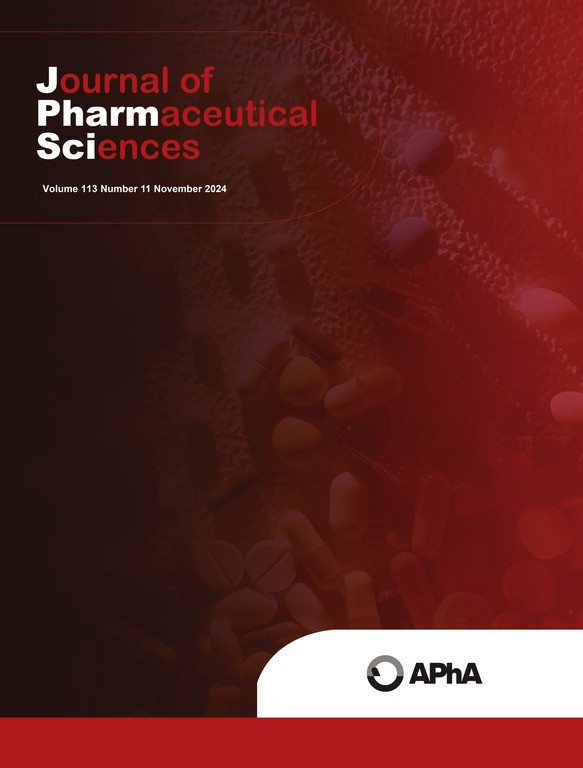Intranasal delivery of kaempferol via magnesomes for brain seizure treatment: Design, characterization, and biodistribution studies
IF 3.7
3区 医学
Q2 CHEMISTRY, MEDICINAL
引用次数: 0
Abstract
The current study aims to develop phospholipid magnesomes retaining the inherent neuroprotective activities of kaempferol as a proposed treatment approach for epilepsy. Magnesomes were prepared using varied amounts of phospholipid, magnesium sulfate and poloxamer 188, and evaluated on in-vitro and in-vivo levels. The prepared vesicles possessed nanosizes (112-625 nm), negative charges (-16 to -20 mV), and entrapment efficiency (80–96 %) with negligible changes in their colloidal properties after 3 months’ storage. Magnesomes showed sustained release of kaempferol as well as superior permeability relative to drug solution. Radiolabeling of kaempferol with iodine-131 was successfully performed using electrophilic substitution. The superior brain uptake of intranasally delivered 131I-kaempferol-magnesomes containing 3.13 µg/20µl of kaempferol compared to intravenous and intranasal solutions was demonstrated employing biodistribution and pharmacokinetic tests conducted using Swiss Albino male mice. Brain to blood ratio of the intranasally administered kaempferol was significantly higher compared to intravenous injection showing uptake of 9.9 ± 0.3 % injected dose per gram organ at the first 5 min ensuring a rapid onset of action. The drug targeting efficiency and nose to brain direct transport percentages of 131I- kaempferol-magnesomes were 215.0 and 87.0 %, respectively with relative bioavailability of 810.24 ± 119.1 %. Accordingly, intranasal kaempferol-magnesomes showed effectiveness in brain targeting and could be beneficial for managing epileptic seizures.

经镁体经鼻给药山奈酚治疗脑癫痫:设计、表征和生物分布研究。
目前的研究旨在开发保留山奈酚固有的神经保护活性的磷脂镁体,作为癫痫的治疗方法。用不同量的磷脂、硫酸镁和poloxam188制备镁体,并对其体外和体内水平进行了评价。制备的囊泡具有纳米尺寸(112 ~ 625 nm)、负电荷(-16 ~ -20 mV)和包封效率(80 ~ 96%),在3个月的储存后,其胶体性质的变化可以忽略不计。镁体表现出山奈酚的缓释和相对于药物溶液的良好渗透性。用亲电取代法成功地对山奈酚进行了碘-131的放射性标记。采用瑞士白化病雄性小鼠进行的生物分布和药代动力学试验证明,鼻内给药含有3.13 μ g/20 μ l山奈酚的131i -山奈酚-镁体比静脉和鼻内给药更优的脑摄取。与静脉注射相比,鼻内给药山奈酚的脑血比明显更高,在前5分钟内,每克器官的注射剂量为9.9±0.3%,确保了快速起效。131I-山奈酚镁体的药物靶向效率和鼻脑直接转运率分别为215.0%和87.0%,相对生物利用度为810.24±119.1%。因此,鼻内山奈酚-镁体显示出脑靶向的有效性,可能有利于控制癫痫发作。
本文章由计算机程序翻译,如有差异,请以英文原文为准。
求助全文
约1分钟内获得全文
求助全文
来源期刊
CiteScore
7.30
自引率
13.20%
发文量
367
审稿时长
33 days
期刊介绍:
The Journal of Pharmaceutical Sciences will publish original research papers, original research notes, invited topical reviews (including Minireviews), and editorial commentary and news. The area of focus shall be concepts in basic pharmaceutical science and such topics as chemical processing of pharmaceuticals, including crystallization, lyophilization, chemical stability of drugs, pharmacokinetics, biopharmaceutics, pharmacodynamics, pro-drug developments, metabolic disposition of bioactive agents, dosage form design, protein-peptide chemistry and biotechnology specifically as these relate to pharmaceutical technology, and targeted drug delivery.

 求助内容:
求助内容: 应助结果提醒方式:
应助结果提醒方式:


